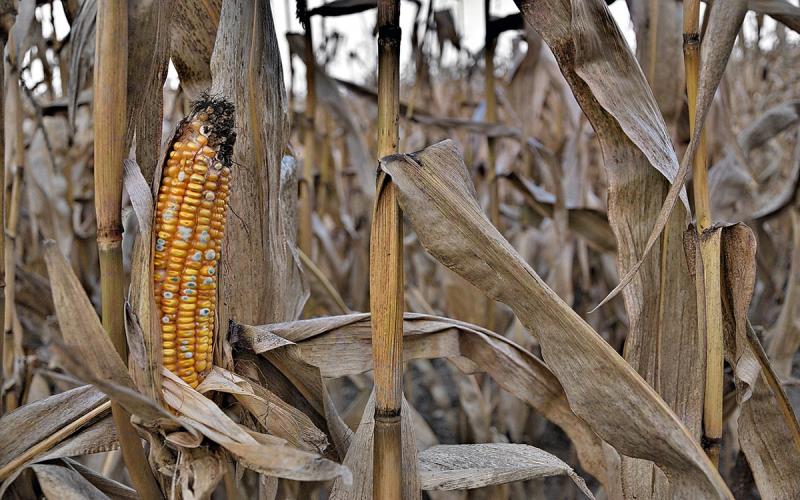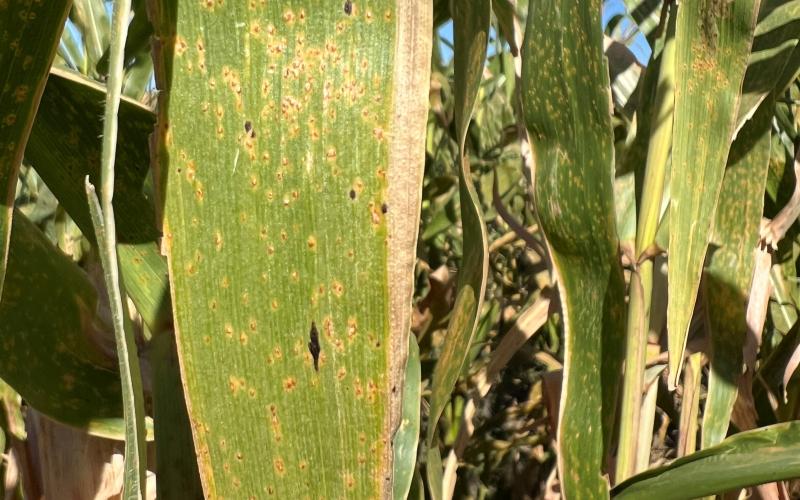Written collaboratively by Ciera Kotaska and Madalyn Shires.
Recent Tar Sport Cases
Tar spot was found in South Dakota on August 30, 2024 in Minnehaha County. A single lesion was found, so no management was recommended (Figure 1). The lesion was found mid-canopy, indicating that it was likely windblown from other areas.
An additional tar spot sample from Turner County was submitted to the SDSU Plant Diagnostic Clinic on September 5, 2024 with moderate infection levels and many affected plants (Figure 2). Moderate infections can reduce yield and should be monitored closely for progression. While no management is needed for moderate infections this late in the season, if moderate infections are identified, tar spot resistant hybrids should be considered for 2025 planting season.
Minnehaha County
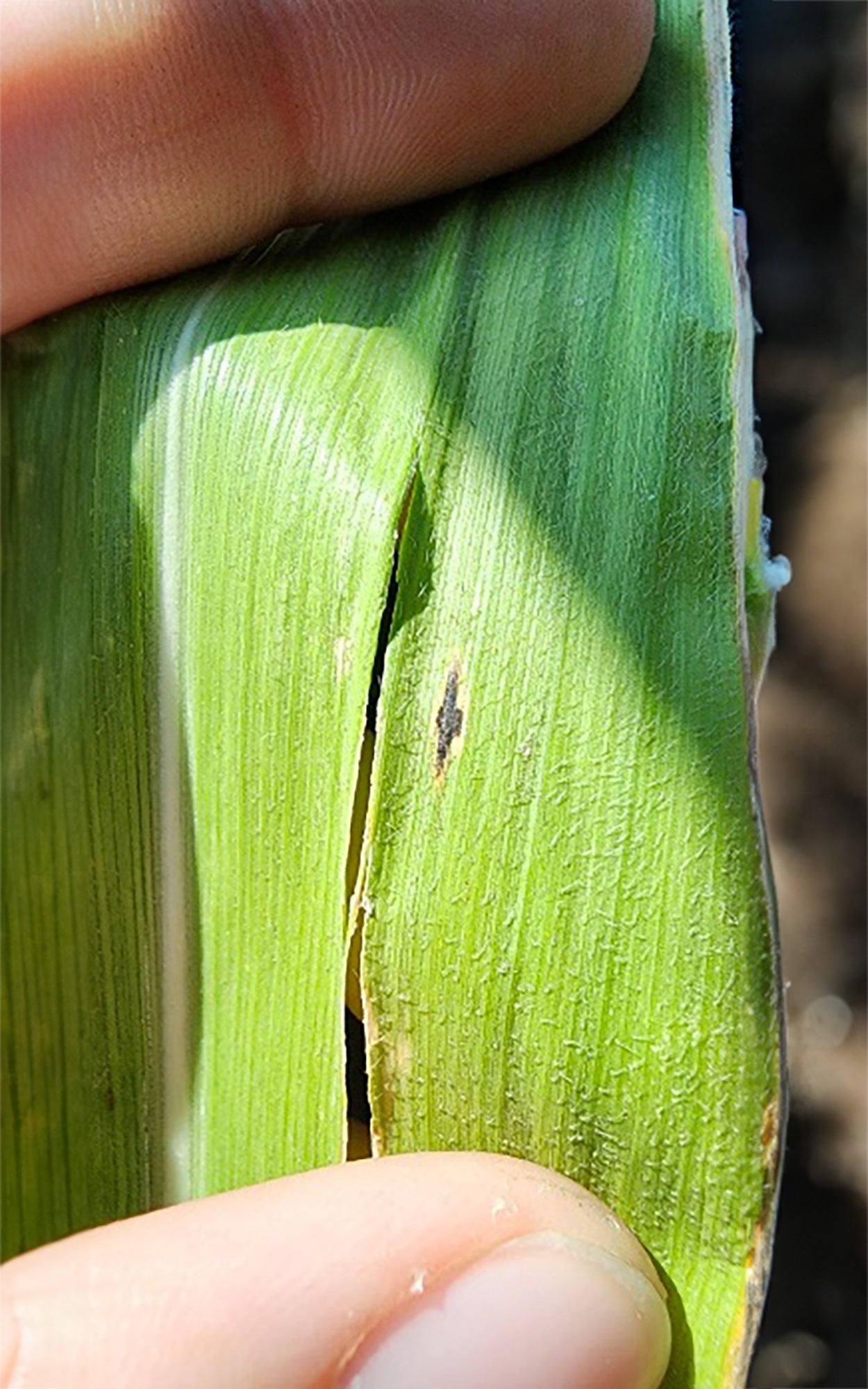
Turner County
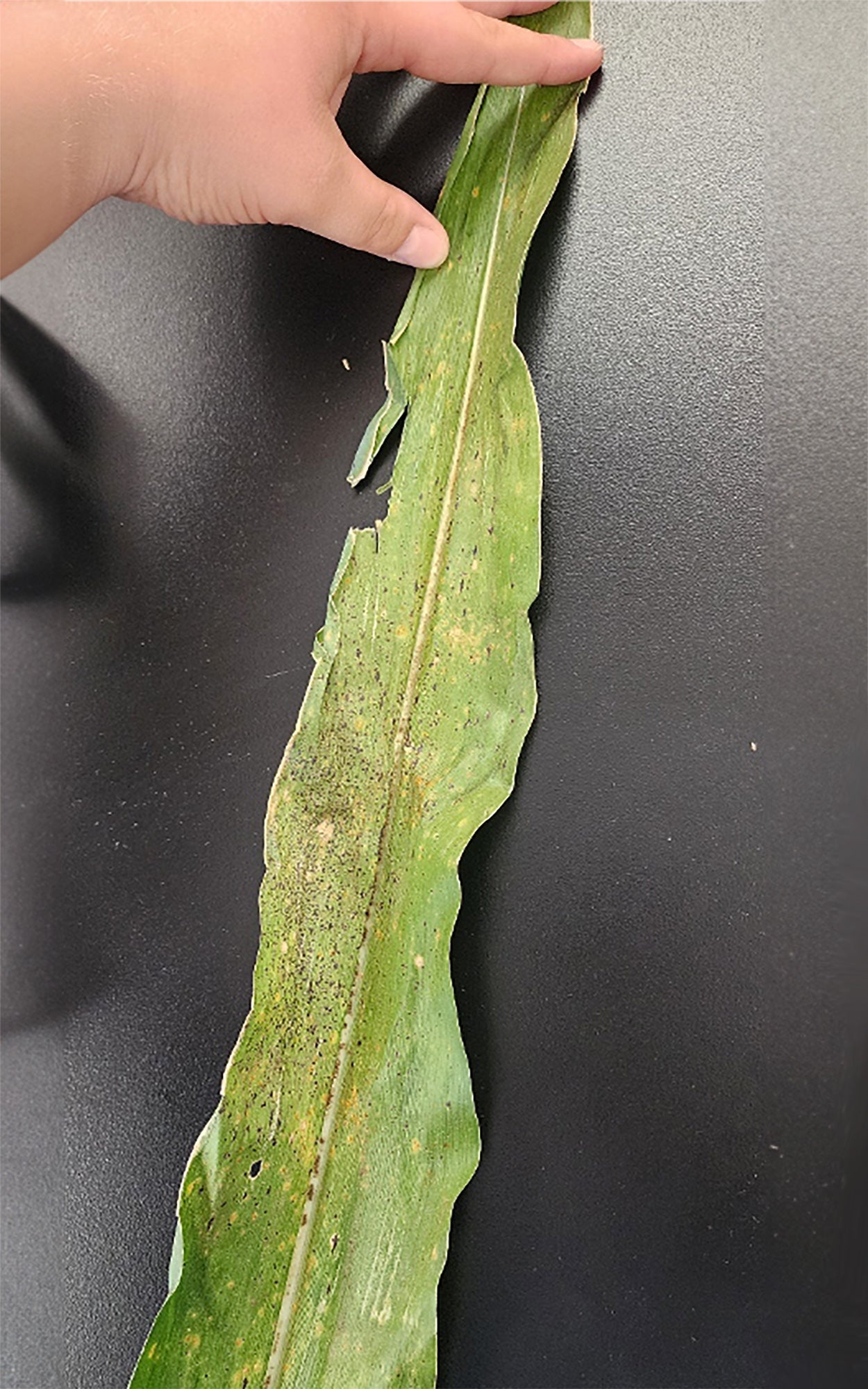
Turner County
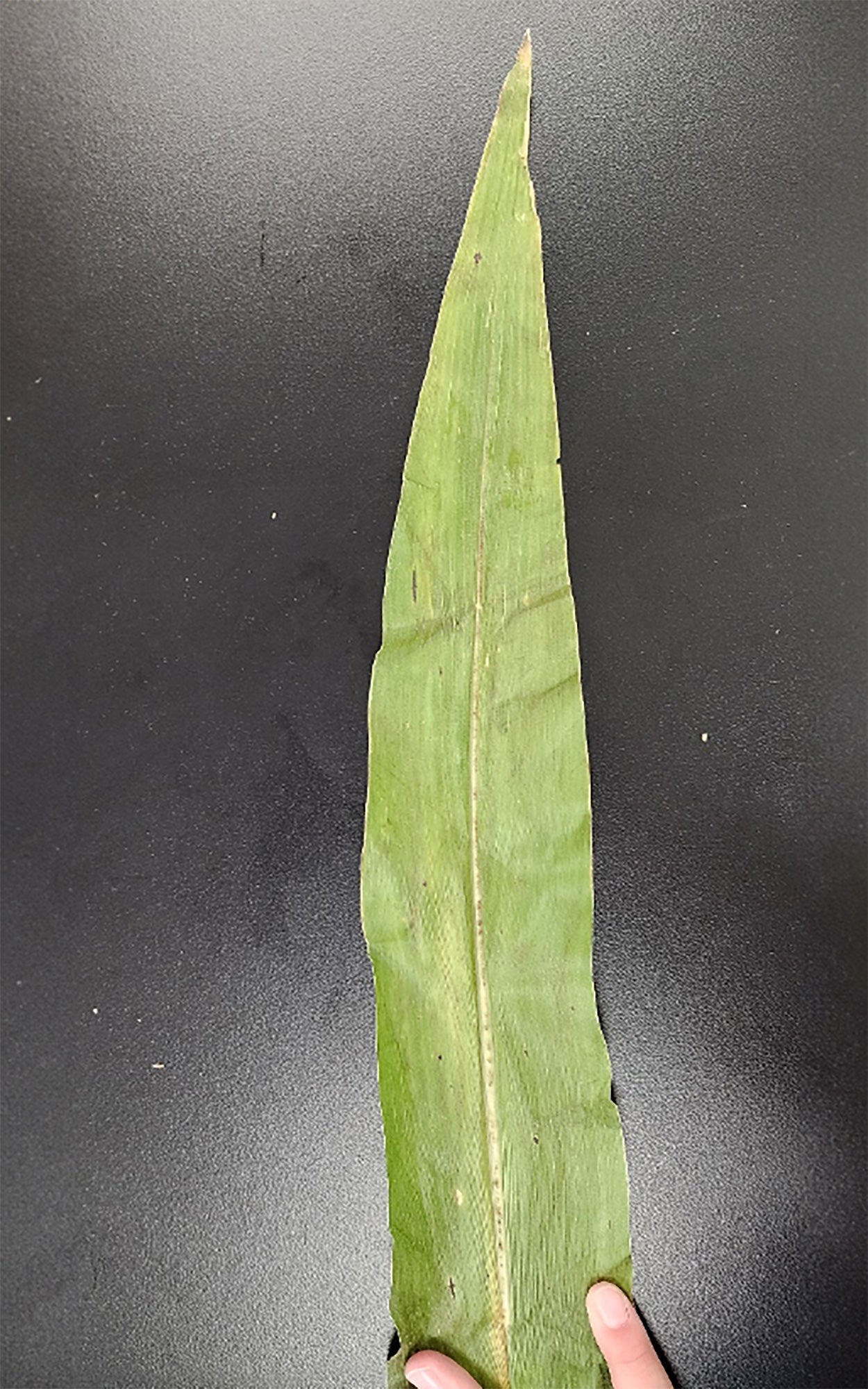
Scouting and Management
Tar spot lesions may be found anywhere on the plant and will typically appear to be black and diamond-shaped. Lesions cannot be rubbed off the plant like insect frass can be, which is commonly confused as tar spot. Black lesions may also be surrounded by a yellow halo.
Low levels of tar spot do not indicate a need to spray, but they do indicate that fields should be routinely scouted until harvest. If tar spot is found in the field, it may overwinter in the corn residue. Previously, tar spot was found in six counties: Union (2022, 2023), Clay (2022, 2023), Yankton (2022, 2023), Lincoln (2022), McCook (2022), and Turner (2022). As many previously infected fields in a corn-soybean rotation are back to corn this year, it is important to check fields in these counties and surrounding areas.
If you suspect that you have found tar spot, please reach out to Madalyn Shires, Extension Plant Pathology Specialist.

